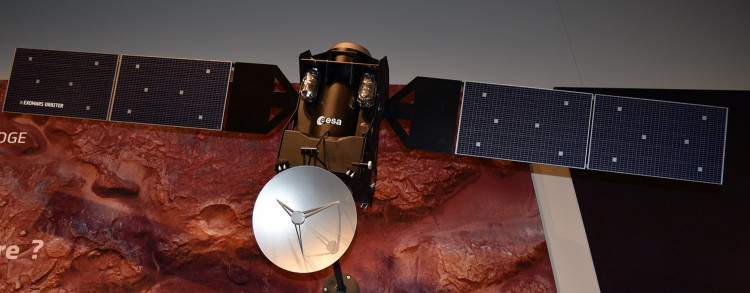A new study confirmed that the planet Mars is wiggling while spinning on its axis. Research published in the journal Geophysical Research Letters states that, for the first time in any solar system body other than the Earth, a component of the motion of the Mars spin axis, called the Chandler wobble, has been observed.
As Mars spins, its poles stray slightly away from its axis of rotation, traveling about four inches in about every 200 days.
Mars is the second planet in the universe believed to exhibit a wiggling anomaly called the Chandler wobble, according to the American Geophysical Union (AGU) news site, Eos.org.
The authors of the report used 18 years of data obtained by three satellites circling the Red Planet: Mars Odyssey, Mars Reconnaissance Orbiter, and Mars Global Surveyor to track changes in Martian poles.
The effect, first discovered more than a century ago by astronomer Seth Carlo Chandler, is observed in planets that are not completely round.
In the case of planet Earth, the fluctuation is more apparent, with the poles wandering some 30 feet from the axis of rotation in a circular pattern repeated every 433 days.
Although the wobble effect on Earth is marginal, according to Eos, scientists are still confused by the processes that drive it. They initially calculated that the wriggle would naturally disappear within a century of its origin. The Earth's wobble, however, has continued unabated.
Earth rotates once every 24 hours on its axis, guiding the constant loop between day and night. Meanwhile, forces are causing Earth to wobble as it revolves, with scientists using lasers and mirrors to monitor Earth's rotation.
The wobble is fed to a degree by the pull of gravity from the sun and the moon, as well as by changes of atmospheric pressure.
Ocean tide loading-the deformation of the Earth due to the weight of the ocean tides-and the wind, which shifts the direction of the Earth's axis relative to the surface, also feed into the effect.
The movement of the rotation axis over a period of one year is determined by another force. The elliptical orbit of the Earth around the sun is the cause for this "annual wobble."
In the case of Mars, the writers of the study also concluded that the wobble will ultimately disappear.
Since Mars has no oceans, with its rocky surface, canyons, volcanoes, dry lake beds, and craters all over it, and much of the red dust shrouded in it, atmospheric pressure changes alone may trigger a wobble rotation, according to Eos.
Scientists hope that further research will provide more insight into the elusive forces at play that drive the recurrent wonky motions.




